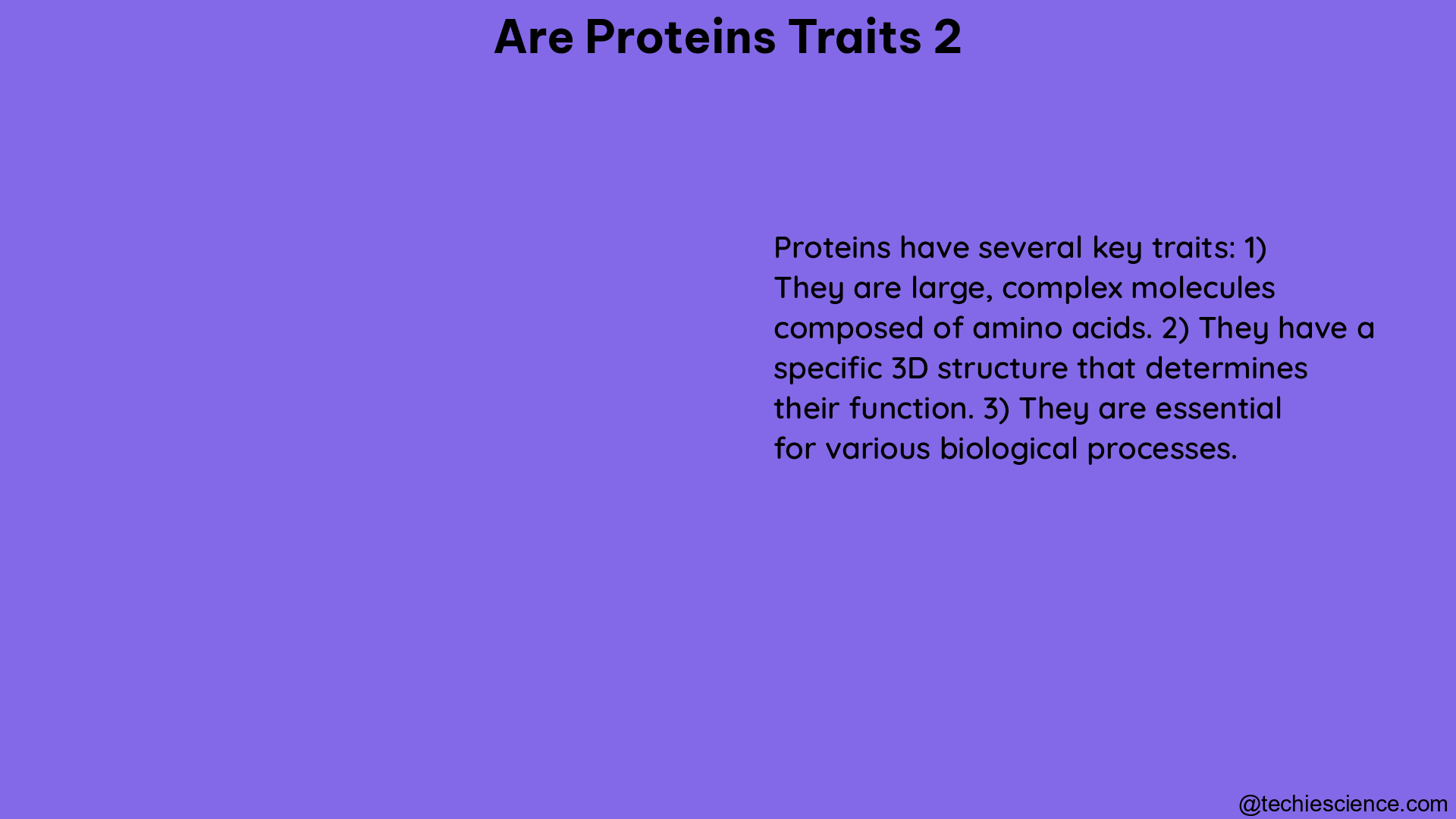Protein traits 2, also known as quantitative protein traits, are measurable and quantifiable characteristics of proteins that can vary among individuals or populations. These traits are influenced by multiple genes and environmental factors, making them complex and polygenic in nature. Understanding the genetic architecture of protein traits can provide valuable insights into the underlying mechanisms of common diseases and relevant biological traits.
Genome-Wide Association Study (GWAS) on Serum Proteins
A comprehensive genome-wide association study (GWAS) was conducted to investigate the genetic effects on serum proteins and their potential insights into the genetics of common diseases and relevant traits. The study identified three distinct categories of proteins:
-
Proteins with at least one cis signal: These proteins have genetic variants located near the gene that encodes the protein, indicating a direct genetic influence on the protein’s expression or function.
-
Proteins with no cis signals and at least one trans signal: These proteins have genetic variants located far away from the gene that encodes the protein, suggesting a more complex genetic architecture involving regulatory mechanisms or interactions with other genes.
-
Proteins with no genetic signal: These proteins do not show any significant genetic associations, suggesting that their expression or function may be primarily influenced by environmental factors or other non-genetic mechanisms.
Genetic Signals and Protein Trait Architecture

The presence of cis and trans signals provides valuable insights into the genetic architecture of protein traits. Cis signals indicate a direct genetic influence on the protein, while trans signals suggest a more complex regulatory network or interactions with other genes.
Cis Signals
Cis signals refer to genetic variants located near the gene that encodes the protein. These signals can provide insights into the following:
- Protein Expression: Cis signals may influence the expression levels of the protein, either by affecting transcriptional regulation or post-transcriptional processes.
- Protein Structure and Function: Cis signals can also impact the amino acid sequence of the protein, leading to changes in its structure and potentially altering its function.
- Protein Stability: Genetic variants in the coding region or regulatory regions of the gene can affect the stability of the protein, influencing its abundance and availability.
Trans Signals
Trans signals are genetic variants located far away from the gene that encodes the protein. These signals can provide insights into the following:
- Regulatory Networks: Trans signals may be involved in the regulation of the protein’s expression, potentially through transcriptional or post-transcriptional mechanisms that involve distant genetic elements or trans-acting factors.
- Protein Interactions: Trans signals can also influence the protein’s interactions with other biomolecules, such as enzymes, receptors, or signaling molecules, which can impact its function and downstream effects.
- Pleiotropic Effects: Proteins with trans signals may be involved in multiple biological pathways or processes, suggesting a more complex and widespread role in the organism’s physiology.
Continuous Protein Traits
In addition to the presence or absence of cis and trans signals, the study also derived continuous traits for each protein, including:
-
Number of Cis Signals: The number of cis signals associated with a protein can provide insights into the genetic complexity and potential for fine-tuning its expression or function.
-
Number of Trans Signals: The number of trans signals associated with a protein can indicate the extent of its involvement in regulatory networks and interactions with other genes or biological processes.
-
Presence or Absence of Genetic Signals: The presence or absence of any genetic signals, either cis or trans, can suggest the relative importance of genetic versus non-genetic factors in determining the protein’s characteristics.
These continuous traits can be used to further investigate the genetic architecture of protein traits and their relationship with other biological traits, such as disease susceptibility or physiological processes.
Enrichment Analysis of Protein Traits
The study also conducted enrichment analysis to identify proteins that were significantly associated with specific phenotypes. This analysis revealed that certain proteins were enriched for specific phenotypes, suggesting that these proteins may play a role in the development or expression of these traits.
Some examples of the enrichment analysis findings include:
- Lipid Metabolism: Proteins involved in lipid metabolism were found to be enriched for traits related to blood lipid levels, such as cholesterol and triglycerides.
- Immune Function: Proteins associated with immune system processes were enriched for traits related to inflammatory markers and autoimmune disorders.
- Cardiovascular Health: Proteins linked to cardiovascular function were enriched for traits related to blood pressure, heart rate, and other cardiovascular-related phenotypes.
These findings highlight the potential of protein traits to serve as biomarkers or therapeutic targets for various diseases and physiological conditions.
Implications and Applications
The insights gained from the study of protein traits 2 have several important implications and applications:
-
Genetic Architecture of Protein Traits: Understanding the genetic architecture of protein traits, including the roles of cis and trans signals, can provide valuable insights into the complex interplay between genetics and protein expression or function.
-
Biomarker Discovery: Protein traits can serve as potential biomarkers for various diseases and physiological conditions, as demonstrated by the enrichment analysis findings. These biomarkers can aid in early diagnosis, disease monitoring, and targeted therapeutic interventions.
-
Drug Target Identification: Proteins with significant genetic associations or enrichment for specific phenotypes may represent promising targets for drug development, as they may play crucial roles in the underlying pathophysiology of diseases.
-
Personalized Medicine: The genetic and environmental factors that influence protein traits can contribute to individual variability in disease susceptibility, drug response, and overall health. Incorporating protein trait data into personalized medicine approaches can help tailor treatments and preventive strategies to individual patients.
-
Evolutionary Insights: Studying the genetic architecture of protein traits can also provide insights into the evolutionary processes that have shaped the diversity and function of proteins within and across species.
In conclusion, the exploration of protein traits 2 through genome-wide association studies and enrichment analyses has revealed the complex and multifaceted nature of these quantitative characteristics. By unraveling the genetic and environmental factors that influence protein traits, researchers can gain valuable insights into the underlying mechanisms of various diseases and biological processes, paving the way for improved diagnostic tools, targeted therapies, and personalized healthcare approaches.
References:
- Are Genes Good Markers of Biological Traits? – Biosocial Surveys
- A genome-wide association study of serum proteins reveals shared genetic architecture with clinically relevant traits – Nature Communications
Reference Links:
- https://www.ncbi.nlm.nih.gov/pmc/articles/PMC3916661/
- https://openoregon.pressbooks.pub/mhccmajorsbio/chapter/presenting-data/
- https://www.nature.com/articles/s41467-021-27850-z

Hello, I am Bhairavi Rathod, I have completed my Master’s in Biotechnology and qualified ICAR NET 2021 in Agricultural Biotechnology. My area of specialization is Integrated Biotechnology. I have the experience to teach and write very complex things in a simple way for learners.